

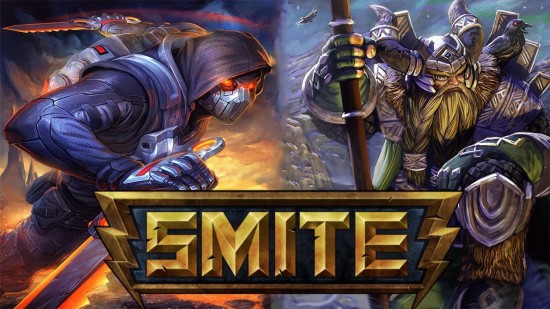
Recently, the internet has been taken up into something of a storm by this event called SWC. You’d be forgiven for thinking this meant the South West College of Northern Ireland but sadly, you’d be wrong. From Jan. 9 to Jan. 11, thousands of Smite fans around the world tuned into Twitch.tv to watch professional e-sports teams play against one another in pursuit of a $2.6 million prize fund. This is likely why you’re here right now, reading the words of a guide to get started in Smite and wondering why the author is caterwauling along writing about some contest?
Well, the recent championship has given Smite something of a PR boost. More and more new players are downloading Smite, and it’s likely that you’ll be one of them. If you aren’t, then here’s a handy little rundown.
Smite is an online action game in which players battle alongside their teammates against the opposing force in a MOBA with a difference. Traditionally, and in the genetic vein of the original DOTA, a MOBA is played from a top down view point that is itself a long-established feature of strategy games. Smite, however, plays out from a closer angle, giving it a much more visceral and in-your-face feel. In a world where League of Legends and DOTA 2 dominate the world of e-sports and free-to-play MOBAs, Smite stands out as something a little special.
This little something special does mean that for some Smite can be a little bit too different to the norm. So here’s a handy guide to get you started in Hi-Rez Studios’s third person MOBA whether you’re a veteran of the genre or writing MOBA into your Google search bar right now.

The moment you load Smite, you’re greeted with the option to take part in a short tutorial. Now, being an experienced gamer, you may feel that playing a tutorial is a little below you. It’s okay, many of us feel this way. That being said, Smite is a different kettle of fish altogether. The game uses familiar mechanics in ways which may be wholly unfamiliar to many players. This means only one thing. If you’re starting Smite, start looking into those tutorials.
They aren’t like the typical tutorials you see in other titles. There’s no push B to crouch or click the left stick in to sprint like many other tutorials have. Smite offers an insight into both the mechanics and its meta game. They teach you what a Guardian should do and where a Hunter should go. They let you know what to be mindful of. They even take the time to inform you of the triggers you’ll have to look out for in each of Smite‘s game modes. As far as a starting grid goes, these almost guarantee to put you into pole position and get you started on the path to greatness.
Something else finds its way into these lessons that really makes them worth your time; they offer you the opportunity to play as any character role you’d like. You can dive into any of them as whichever character you so choose and get a quick lesson as to your role. This is incredibly important as it’ll ensure that when you play with other players, you aren’t the target of ridicule simply because you don’t know what an Assassin is supposed to do. They’re actually a pretty good indicator of what you can expect to be doing on whichever role you choose, so choose to do them. It only takes 10 minutes or so to take part in each and it’ll teach you more than pretty much anything else can.
Speaking of good indicators…
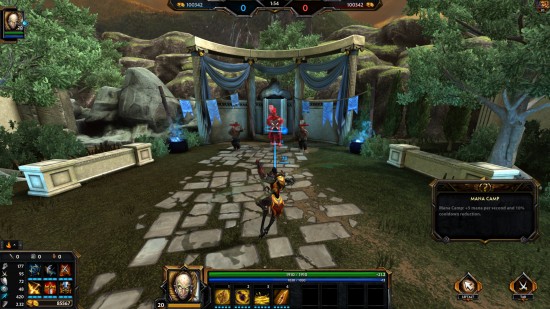
Almost every MOBA now has a little feature that allows you to see where a launched ability will go and who it will hit. This is called telegraphing and Smite already does a stellar job of this. With the strange camera angle compared to other games, it can still be a little jarring of a process to get used to. Luckily, there is an option in the game to add a ruler. It works like any standard ruler you may have used in Mr. Fancypants’ geometry lessons, giving you an exact indication of the distance.
Admittedly, for most of the melee characters this is pretty useless. After all, you know where a melee character generally has to be to hit the enemy in the face — right up in their grill. When playing a Hunter god like Ah Muzen Cab, however, ensuring that you have a good idea of the range of your ability is immensely important. It’ll allow you to quickly get into range of the enemy before they can dish out some damage on you, not to mention grant you an opportunity to keep your foe at an optimal range.
When playing a character with ranged basic attacks, the ruler will display a long blue horizontal line at the maximum range of your ability (so in the cast of the image above, 55). Should you decide to spend time on a ranged character then using this for at least the first few games is recommended while you get into the swing of everything. When a few games have passed and you feel comfortable with the reach of your sting, the ruler can be removed just as easy as it is applied.
To turn it on (or off) enter the Settings menu at any time, then move over to the Targeting tab and select the desired option from the drop down menu titled Distance Line. It’s a small thing but to be the best you need to first practice. Taking this opportunity to get your sights lined up can and will be the difference between success or failure.
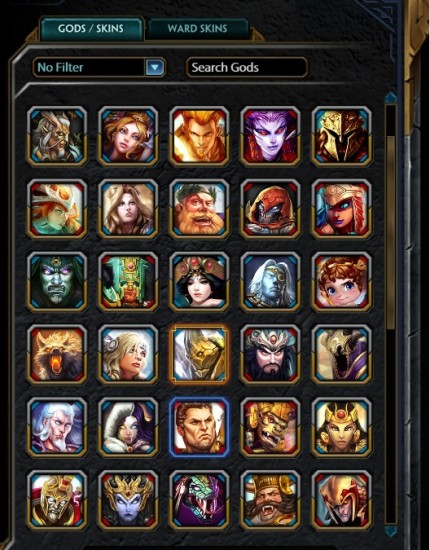
You’ve just downloaded Smite and you want to get right into pummeling some unfortunate person into the ground with Bakasura’s Take Down ability. The first place to go for you would be the Normal playlist right? In rare cases, yes but for the most part, this is perhaps the worst move you can make. You’re a new player and the community of Smite, while lovely 99.99% of the time, will eat you up if you’re inexperience is costing the game. To avoid this your first few hours should be spent between two modes: Practice and Co-op.
Why? In these arenas of Smite you’ll be playing either alone (Practice) or alongside other players (Co-op) against AI opponents. They’re still a threat, just less of one than your average human-controlled god. If you’re playing alone and just want to try out a new god, these are the places to go to get an idea of how each god feels and whether they fit your play style. Learning the skills of your newly chosen god is much easier in a low-stress environment like Practice than in the high-octane world of Smite‘s Conquest battles.
There are a few caveats to this, though. If you’re playing with friends who all agree that you’re okay to take a shot at a new god, then feel free to do so. They’ll have your back and may even be able to offer handy tips should the going get tough. This also flies out the window, over the hedge, through the city center and onward into the next continent if you’re playing a standard Assault game. This game mode throws all players onto a totally random god so chances are no-one around you knows totally what they’re doing.
Should you not feel confident with your skills though or prefer to learn a new god in a safe area, Practice and Co-op are definitely the places to play in Smite.

Smite isn’t a game that lumbers you with a pathetically small roster. At the time of writing, the game houses 61 different gods across 5 roles all begging to be played. The problem that often faces many new players is simple but obvious. It’s the one we all have when we throw a coin into the arcade’s only working Street Fighter II cabinet that isn’t covered in dried soda and the tears of children. Who the hell do you play as? Well, the answer to this has a few parts so let’s get started with it.
Each week, 5 gods, 1 per role, are available free to play to anyone who wishes to give them a try in any mode. These are often a good starting point when you’ve been playing Smite for a while or when you feel confident enough to change gods weekly. If you’re a more discerning customer and want to buy a god to play, don’t just jump on in and buy them. Head over to Jungle Practice and select them to give them a blast. You don’t have to actually own a god to use them in Jungle Practice so this mode is a great way to get a feel for the god that really peaked your interest.
It doesn’t even stop there. For a small amount of Favor (Smite‘s in-game player currency) you can rent a god for differing lengths of time. Gods can also be purchased with this currency which is earned by doing numerous in-game activities. Maybe you saw someone wrecking up the place as Apollo and you want to see if you can do the same. Then taking this option is perhaps the best way to go before forking over all of your Favor – or even hard earned real life money – into a single god.
If you’re really unable to pick a god to even consider looking at jump into Smite‘s Assault mode. The games are generally quick and based around single lane Team Fights (these being when all of the members from both teams get together for a good ol’ rumble). They’ll force each player to pick a totally random god and can be a wonderful way to window shop for new characters while earning a little something back if you should succeed or indeed fail.
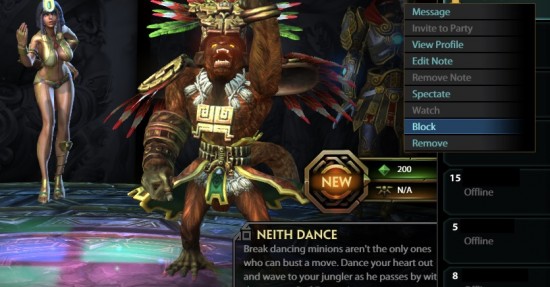
This isn’t a page about the monsters in your closet (because they’re real and don’t let your parents tell you different). This is to try and help those of us who may have concerns about getting involved in new social situations out there into the unknown. MOBAs often have a stigma of community toxicity attached to them. That’s to say the player base is often unpleasant towards those who aren’t as good as they perceive themselves to be or relentlessly hound new players.
Before anyone says anything here, this is not suggesting that they’re actually like that. There is that sort of community in every single game, it’s just often rare to actually experience it first hand for 95% of the gaming population. Now many people have suffered from this online unpleasantness (some of the staff at Twinfinite included) but here’s two things to remember before you go into Smite as someone who may have trouble socializing with others or has been burned before by online interaction.
First and foremost, be nice. If you’re nice to people they’ll be nice to you. Apologize when you get something wrong. Congratulate a comrade if you see them pull off some insanely good move. Thank them when they swoop in to save your life. People usually appreciate this sort of interaction and will more often than not reply in kind.
Secondly, it’s important to remember that if someone is upsetting you, Smite (like other games) has the tools to help you avoid any upset. If someone is just generally getting on your nerves with private messages and the like, you can make use of the Mute or Block buttons to keep them away from pissing you off. If you’re in a game and there’s someone annoying you with private messages simply typing “/dnd” into the chat window will put your account into a mode where you cannot receive Private Messages for a time.
If someone is really being the lowest of the low and severely harassing you or generally making gameplay unpleasant (by leaving mid game when things go sour or feeding* the enemy team) you can select a Report button. This will allow you to send the Hi-Rez community team a direct report on whoever is damaging your time in Smite and open up the opportunity for them to deal with it.
Have you got any tips of your own for new players to Smite? Leave them in the comments box below.




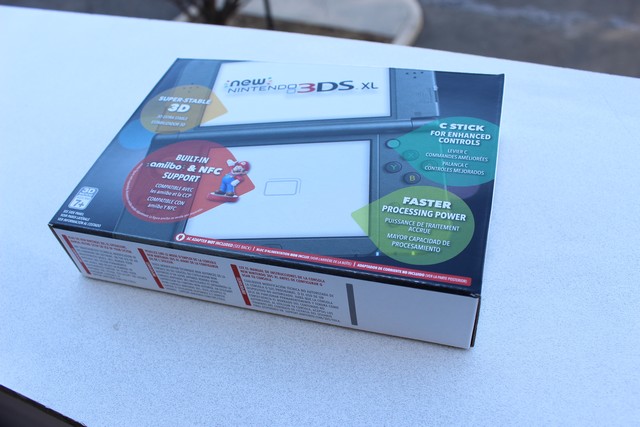 New Nintendo 3DS XL Review and Competition
New Nintendo 3DS XL Review and Competition The Witcher 3: Wild Hunt Location Guide On How To Find Missing Bomb Formula
The Witcher 3: Wild Hunt Location Guide On How To Find Missing Bomb Formula Capcom 30th Anniversary Character Encyclopedia Review
Capcom 30th Anniversary Character Encyclopedia Review 5 Possibilities For Where Assassin’s Creed Should Go Next
5 Possibilities For Where Assassin’s Creed Should Go Next One Data-Saving Reason to Use Chrome on Android & iOS
One Data-Saving Reason to Use Chrome on Android & iOS